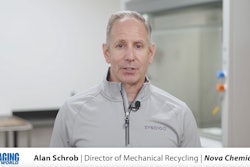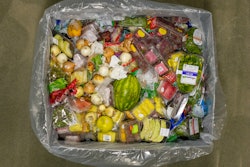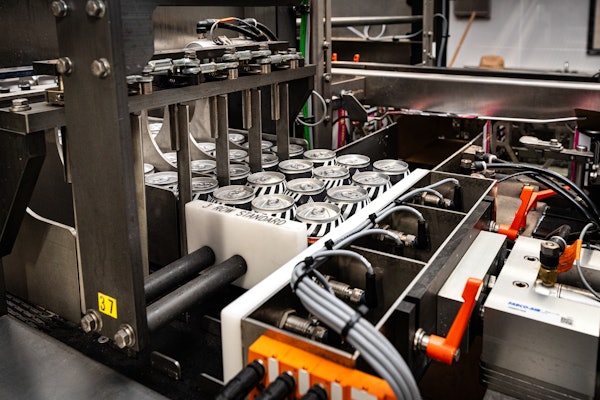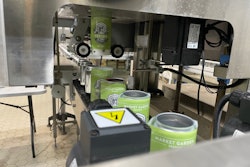
At the recent Plastics Recycling Conference in National Harbor, Md., Packaging World sat down with Andrea Bassetti, senior analyst, plastics recycling, Americas, of ICIS to unpack some of the biggest trends shaping plastics recycling in North America—from global trade dynamics and legislative hurdles to the role of perception in material choices. Here’s what she had to say.
Packaging World:
For readers who might not be familiar—what does ICIS do?
Andrea Bassetti:
We’re a data intelligence company. We track supply, demand, and prices for a wide range of commodities, including plastics. Over the past five years, we’ve built out a recycling team to monitor global recycling capacities, demand trends, and pricing—especially for Europe, Asia, and the U.S. It gives us a great global view of the recycling landscape.
Can you walk me through some of the key trends that are shaping North American plastics recycling right now?
Sure. One of the biggest trends we’re seeing is the shift in trade dynamics within North America itself. The U.S. actually became a net exporter of plastic waste for the first time in 2023 and 2024. A lot of that is going to Mexico, which has significantly ramped up its PET recycling capacity. They’ve implemented new legislation, and with a number of big brands operating there, demand for recycled PET is strong.
So you’re seeing PET bales move out of the U.S., especially from the West Coast, into Mexico. But that’s pulling supply away from certain U.S. regions, which is then creating new demand—often filled by Asian imports. It all comes down to cost, and right now, cost sensitivity is extremely high.
Just to clarify, these bales—are they sorted plastic waste?
Exactly. They can be mixed or sorted. In California, for example, labor costs are high, so there’s little incentive to further sort the bales locally. Instead, they’re shipped to Mexico where labor is cheaper. There, they’re either re-sorted and sent back or used locally. Mexico’s informal labor system allows for high-quality sorting—sometimes sorting the same bale multiple times—which U.S. recyclers value because of the higher yields.
That’s fascinating. It does seem to complicate the whole notion of a circular economy, though.
Absolutely. We need to rethink the idea that domestic recycling alone is the solution. Imports and exports are going to remain crucial, even though it’s counterintuitive to circularity. This kind of movement is GHG-intensive, no question, but without better waste management infrastructure, trade is essential for the survival of these markets.
Can investments like Republic Services’ new Polymer Center help offset some of that dependency?
Definitely. Facilities like that, which focus on advanced sorting, will be critical. Any investment in collection and sorting is a step in the right direction. But there’s always going to be the challenge of competing on cost, especially with Asia producing bales more cheaply.
Let’s talk legislation. It has come up a lot at the conference. Do you think it’s the most powerful driver of change?
It should be. Legislation carries real consequences, unlike voluntary sustainability commitments. But in the U.S., especially at the federal level, we just don’t see that kind of policy push happening anytime soon. It’s different in Europe or even Latin America. Here, we might see some movement around waste collection, but not on recyclability-focused regulations.
We often hear how brands get stuck—like when a more sustainable material doesn’t count toward EPR or recycled content mandates.
It’s a tough spot. Brands are trying to do the right thing, but the market is confusing and expensive. In places where brand commitments are strong, demand goes up—and so does price volatility. That’s been stressful for the industry. What many want now is a little less volatility and a little more stability.
We ran a sustainability survey recently. Respondents said cost is their biggest hurdle and that brand reputation is the biggest driver. They also brought up paperization as a solution. That surprised me.
Not surprising to me—they’re all connected. Brand reputation is tied to them being able to achieve it. Of course, if the demand is really high, then the cost goes up, and then it becomes just a much higher cost for some of these brands that they’re not willing to sustain. So I get the hesitancy there But paperization? That’s tricky. There are so many applications where paper just doesn’t work. And when it does, it’s often with a plastic liner that makes the package unrecyclable anyway.
There’s a real need to refocus the conversation on making plastics recycling work better. Plastic can be lightweight, cost-effective, and recyclable—if we handle it properly. The issue isn’t plastic itself, but what we do with it after use.
We’ve covered the trend toward switching to aluminum, and I always wonder—are brands doing that for performance or perception?
Probably more for perception. Aluminum is often more expensive and more GHG-intensive to produce. But consumers tend to trust it more. That’s why we need better consumer education. If we’ve trained people to recycle every aluminum can, why is it so hard with a plastic water bottle?
Speaking of recycling types, what’s the current balance between mechanical and chemical?
Mechanical still dominates—by about seven or eight times more capacity in the U.S. It’s the established, proven process. Chemical recycling is newer. There’s a lot of interest—announced projects could increase capacity eightfold by 2028 or 2029—but we don’t expect all of those to succeed. It’s complex and still evolving. Many chemical recyclers are realizing they need to start with very clean feedstock, which limits the waste they can currently process.
Do you think companies like Cyclyx are helping bridge that feedstock gap?
Potentially. But it’s important to remember that if mechanical recycling is viable, no one’s choosing chemical—it’s just too expensive. That idea of competition between the two has mostly faded. They’re now seen as complementary. In fact, many chemical processes begin with mechanical sorting and pre-treatment anyway. PW

























